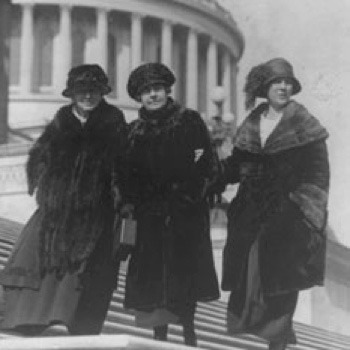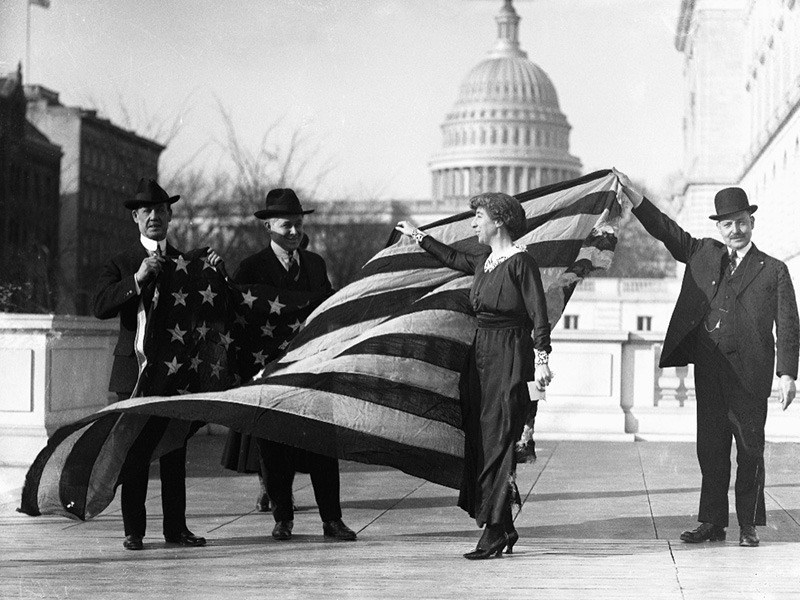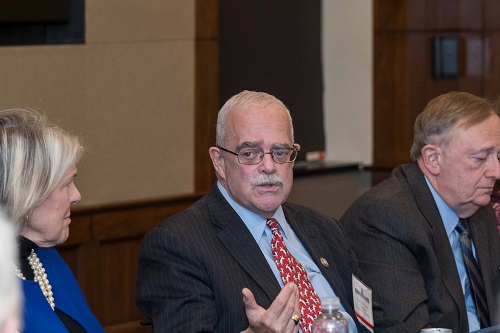On November 11, 2019, Maya Michelle Rockeymoore Cummings announced that she was running for the Maryland 7th Congressional district seat—which had been previously occupied by her late husband Elijah Cummings, who died in October of 2019. In a frank discussion following her campaign’s eventual defeat, she revealed: “People don’t know what to make of me … They have no idea of my background and what my accomplishments have been in life. They just think that I rode in on the arm of my husband.”

“Widow’s succession” takes place when a congressman dies, and his wife takes his seat. Traditionally, if appointed to the Congressional seat, the widow is only supposed to act as a placeholder for her dead husband, and is only expected to serve for a brief period until a long-term solution is determined. However, some women manage to use this period to establish their competency and stay in the seat longer than originally anticipated.
What’s more, in the twentieth century “widow’s succession” was one of the most effective ways to get women into Congress. In 1998, the LA Times reported that widows had a greater chance of winning House races than non-widows:
Among first-time House candidates between 1916-93, 84 percent of the widows won, while only 14 percent of other women were victorious. The trend emerged most strongly when women were rarer in politics; 35 of the 95 women who served in Congress before 1976 were Congressional wives first.
In the 1970s, Diane Kincaid, a political scientist at the University of Arkansas, wrote an article about this phenomenon titled “Over his Dead Body: A Positive Perspective on Widows in the U.S. Congress.” She found that “statistically … for women aspiring to serve in Congress, the best husband has been a dead husband, most preferably one serving in Congress at the time of his demise.”
However, the first woman elected to Congress was not a widow. Her name was Jeannette Rankin, and after a summer of campaigning for one of Montana’s seats in the House of Representatives, she won the second seat by 6,000 votes in November 1916. And so, the 65th Congress had one woman Member—out of 531 Members total. It wouldn’t be until four years later that Congress passed the 19th Amendment, giving women across the country the right to vote.

The first widow elected to replace her husband in the House was Mae Ella Nolan (R-CA), who succeeded John Ignatius Nolan in 1922. Interestingly, after his death, local leaders approached Mae Ella with the idea to run for his seat. She embraced their platform which advocated for labor interests and relaxing Prohibition laws. Only months after her husband’s death, she won the election to serve the 67th Congress. She is quoted as saying, “I owe it to the memory of my husband to carry on his work … His minimum-wage bill, child labor laws, and national education bills all need to be in the hands of someone who knew him and his plans intimately. No one knows better than I do his legislative agenda.” During her term, Mae Ella Nolan accomplished quite a bit while pursuing the initiatives of her late husband. She served on the Committee on Woman Suffrage. She also became the first woman to lead a Congressional committee as chair of the Committee on Expenditures in the Post Office. In this position, she worked to improve wage conditions for laborers.
Almost a decade later, in 1931, Arkansas governor Harvey Parnell appointed Hattie Wyatt Caraway (D-AR) to fill her husband’s seat. Technically, she was the second woman to serve in the Senate—although the first woman, Rebecca Latimer Felton (D-GA) was appointed in 1922 and only served for a single day. Felton filled the vacancy of Senator Thomas E. Watson who died unexpectedly (though he was not her husband). Nevertheless, Wyatt Caraway rejected the convention that she would serve as a mere placeholder and surprised everyone when she ran for a full term. As Kincaid observed, Caraway “confounded the Governor who appointed her and who openly coveted the seat himself by entering the primary for renomination.” She won that election and, as such, became both the first woman in the Senate elected to serve a 6-year term and the first woman to chair a Senate committee (the Committee on Enrolled Bills).
Later, in 1948, Margaret Chase Smith (R-ME) became the first woman to enter the Senate not by appointment, but by election—after already serving in the House from 1940-1949. Her election to the House was only after her husband, Representative Clyde Smith, fell ill and died of a serious heart condition. She ran for the seat because he asked her to. Eight years later, Smith decided to run for the Senate—since Maine’s senior Senator, Republican Majority Leader Wallace Humphrey White Jr., revealed he wouldn’t seek a fourth term. Defeating her opponent, Democrat Adrian Scolten, with 71 percent of the vote, she became the first woman to serve in both houses of Congress.
She’s famous for openly speaking out against Republican Senator Joseph McCarthy’s redbaiting. On June 1, 1950, Chase Smith called McCarthy out on the Senate floor, castigating him for his “selfish political exploitation of fear, bigotry, ignorance and intolerance.” While the speech did little to dissuade McCarthy supporters, it is still considered Margaret Chase Smith’s defining moment in the U.S. Senate.
It’s incredible how many of these earlier American women were only able to secure seats in Congress after their husband’s (or other male Member’s) death. But as Lisa Solowiej and Thomas Brunell argue, the widow effect “changed not only the gender composition of Congress, but also democratic representation in the United States.”
Written by guest contributor Anna Biesecker-Mast, a student at the University of Dayton studying History and English; and minoring in Religious Studies and Women’s and Gender Studies. Edited by U.S. Capitol Historical Society staff.
Sources:
https://history.house.gov/People/Detail/21866
https://history.house.gov/People/Detail/18986
https://fas.org/sgp/crs/misc/R43244.pdf
https://cawp.rutgers.edu/facts/milestones-for-women
https://history.house.gov/Exhibition-and-Publications/WIC/Women-in-Congress/
“Over his Dead Body: A Positive Perspective on Widows in the U.S. Congress,” Diane D. Kincaid from the University of Arkansas
“The Entrance of Women to the U.S. Congress: The Widow Effect,” Lisa Solowiej and Thomas L. Brunell (2003)




